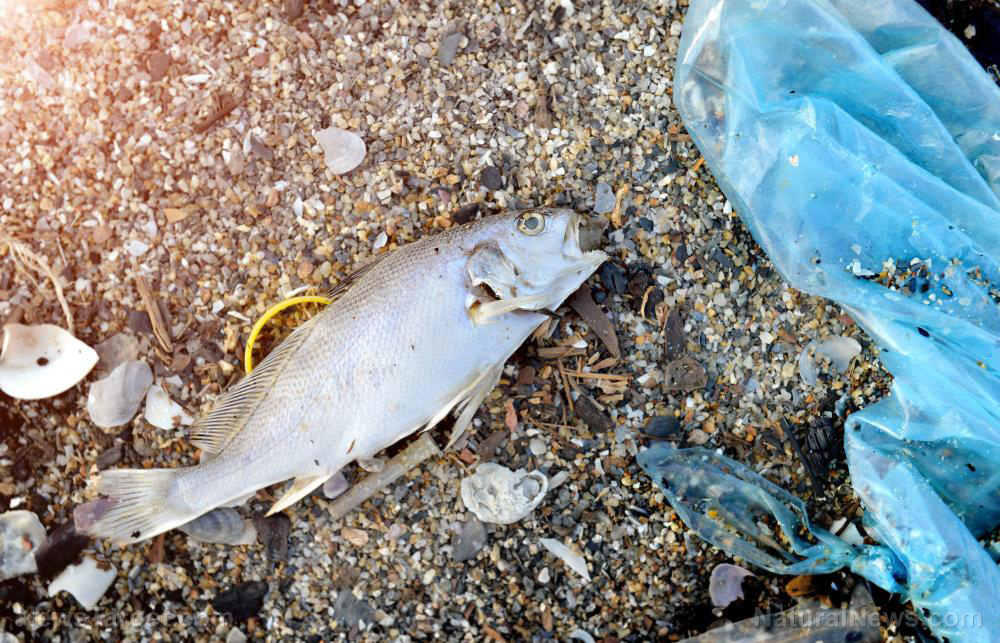Minimizing fibers used in synthetic fabrics can reduce plastic pollution and save marine life
04/28/2019 / By Edsel Cook

Plastic pollution in the ocean is not limited to just large pieces of trash that can choke, entangle, and injure marine life. The microfibers that make up synthetic fabrics also contribute to pollution, which is why it is important to reduce the amount of tiny fibers shed by synthetic clothing during each wash.
Most images of ocean plastic pollution feature plastic trash that’s big enough to be seen with the naked eye. Microfibers, on the other hand, are so small that observing them requires a powerful microscope. A single washing of a coat made from synthetic fabric can release hundreds of thousands or even millions of these plastic fibers.
Microfibers are small enough to slip through the gaps in the screens of most wastewater filtration systems. Once they enter waterways, they will be carried out to sea.
Experts believe that plastic microfibers make up almost ten percent of the total ocean plastic pollution. There are five times as many fibers as there are carrier bags and microbeads, which are now being targeted by countries that want to reduce pollution levels. (Related: Plastic pollution threatens the food supply from the world’s oceans.)
Plastic microfibers are just as dangerous as bigger plastic trash
Microfibers are also contaminating drinking water supplies and the oceanic food chain. They are exceedingly easy to swallow, so it comes as no surprise that they are the most numerous type of plastic discovered in the digestive tract of marine animals.
Accidentally eating plastic pollution has been shown to alter the behavior of animals. The more plastic they swallow, the less actual food they consume, which reduces their maximum size and energy levels.
Plastic trash also attract toxic chemicals. When animals eat these contaminated plastics, their tissues build up toxins. Any predators that feed on those animals are affected even more.
The concentration levels of these chemicals increase as they travel up the food chain. The highest levels of toxins are found in the largest animals. Many of these animals are eaten by humans, who are themselves slowly but surely affected by the chemicals.
Thankfully, there are many ways to reduce the amount of microfiber pollution in the ocean. Both big companies and individuals should do their part in protecting the environment.
Cut back on microfiber pollution with these steps
Most clothing is made from synthetic fabric. Clothing manufacturers should refrain from using synthetic fabrics that drop microfibers. As much as possible, they should make clothes out of natural materials.
Furthermore, if manufacturers will continue to use synthetic fabrics, they should develop new materials that are much less prone to shedding microfibers. Consumers should also check the label of the clothing.
In 2016, Plymouth University researchers demonstrated that polycotton blends are much less prone to shedding than acrylic or polyester during washing. In addition to being more durable, polycotton is also breathable, which makes it a better choice for making clothing.
Meanwhile, consumers could also change their methods of washing clothes to reduce the wear and tear on synthetic fabrics. Clothes in good condition are less prone to shedding.
Wash clothes only when necessary. Outerwear do not need to be washed with every use. Other clothes can be aired out. Some people even put the clothing in the freezer to kill off bacteria that cause bad odors.
Stick to using the gentle wash cycle. The lower temperatures and slower spinning are less rough on synthetic fabrics, so they shed fewer microfibers.
If you are getting a new washing machine, pick a front-loading unit. Not only does it use less energy and water, but it also minimizes the amount of microfibers that end up as plastic pollution.
Sources include:
Submit a correction >>
Tagged Under:
clothing, environ, environment, Laundry, marine life, microfibers, microplastics, ocean plastics, Oceans, plastics, textiles
This article may contain statements that reflect the opinion of the author
RECENT NEWS & ARTICLES
COPYRIGHT © 2017 REAL SCIENCE NEWS





















